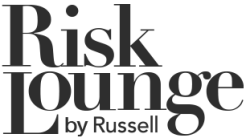
The worldwide economic losses from natural catastrophes and man-made disasters for 2010 were $218 billion in 2010; more than triple the 2009 figure of $68 billion according to Swiss Re’s latest sigma study.
Of that total the cost to the global insurance industry was more than $43 billion, an increase of more than 60% over the previous year.
The study reported in 2010, severe catastrophes claimed significantly more lives than the previous year: around 304 000 were killed, compared to 15 000 in 2009. The deadliest event in 2010 was the Haiti earthquake in January, which claimed more than 222 000 lives, while 56 000 people died during the summer heatwave in Russia. Sigma said natural catastrophes cost the global insurance industry roughly $40 billion in 2010, while man-made disasters triggered additional claims of more than $3 billion. By way of comparison, overall insured losses totalled $27 billion in 2009.
Lucia Bevere, one of the authors, of the study said: “Insured losses were highest in North America in 2010, where they exceeded $15 billion. Despite very low hurricane losses due to the absence of hurricanes making direct landfall in the US, a series of lesser storms throughout the year resulted in this high figure.” Earthquake losses accounted for almost one third of all catastrophe losses in 2010. The February 2010 earthquake in Chile and the September earthquake in New Zealand were the two costliest events in 2010, and led to insured losses estimated at $8 billion and $4.4 billion respectively. Overall natural catastrophe claims in 2010 were in line with the 10-year average due to unusually modest US hurricane losses and in spite of notably high earthquake losses. Incidentally, earthquake losses for 2011 will also be above average as the total insured claims for the February 22 earthquake in Christchurch, New Zealand, are estimated to be between £6 billion and $12 billion. Balz Grollimund, another of the study’s authors, added: “Although no long-term trend of increasing global earthquake activity has emerged, the number of fatalities and insured losses from earthquakes are on the rise. The main reasons are population growth, the higher number of people living in urban areas as well as rising wealth and rapidly increasing exposures. Many of these rapidly growing urban areas are located in seismically active areas.”





